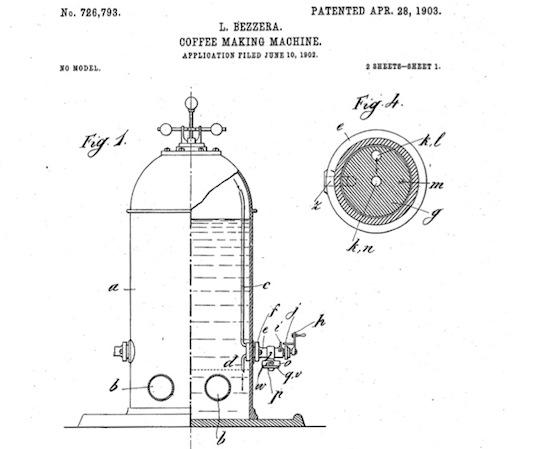The History of the Espresso Machine

Since coffee was first roasted, its brewing methods have evolved from the weird and wonderful to the practical and sophisticated. The first espresso machine was first patented in 1901 in Italy and it has been reinvented for the Holy Grail – the perfect cup of coffee.
Home machines have become more and more sophisticated over the years, emulating shop style espresso machines and more recently offering a pod experience that can be just as good. In the old days, everyday coffee was just instant.
Thank goodness, that today, instant is just not acceptable. While espresso was never designer per se, the machines that make our cappuccinos and lattes have a history that stretches back more than a century.
In the 19th century, coffee was a huge business in Europe with cafes flourishing across the continent. But coffee brewing was a slow process and customers often had to wait for their brew. Seeing an opportunity, inventors across Europe began to explore ways of using steam machines to reduce brewing times – this was, after all, the age of steam.
Though there were surely innumerable patents and prototypes, the invention of the machine and the method that would lead to espresso is usually attributed to Angelo Moriondo of Turin, Italy, who was granted a patent in 1884 for “new steam machinery for the economic and instantaneous confection of coffee beverage.” The machine consisted of a large boiler, heated to 1.5 bars of pressure that pushed water through a large bed of coffee grounds on demand. Though Moriondo’s invention was the first coffee machine to use both water and steam, it was purely a bulk brewer. Not much more is known about Moriondo, due in large part to what we think might have been a branding failure. The two men who would improve on Moriondo’s design would not make the same mistake.
Luigi Bezzera and Desiderio Pavoni were the Steve jobs of Espresso. Luigi Bezzera made several improvements to Moriondo’s machine, introduced the porta filter, multiple brew heads and many other innovations still associated with espresso machines today. And for the first time, a cup of coffee was brewed to order in a matter of seconds. But there was a few problems with Bezzera’s machine. The machine was heated over an open flame, which made it hard to control the temperature and nearly impossible to produce a consistent shot. And consistency is the key to an espresso. While Bezzera designed a few prototypes of his machine his beverage remained largely unappreciated because he didn’t have any money to expand his business. But he knew someone who did; Desiderio Pavoni.
Pavoni bought Bezzera patents in 1903 and improved many aspects of the design. Notably, he invested the first pressure release valve. This meant that hot coffee wouldn’t splash all over the barista from the instant release of pressure.
Bezzera and Pavoni worked together to perfect their machine and at the 1906 Milan Fair, the two men introduced the world to “cafeé espresso.” After the Milan Fair, similar espresso machines began to appear throughout Italy. This machine dominated the espresso market for more than a decade. Yet despite the success of the machines remained a mostly regional delight of Milan and surrounding areas. Nevertheless, these 3 amazing creators of the coffee machine were an important part in creating the coffee you drink today. So you can thank these creators for bringing you the espresso you know and love today.


